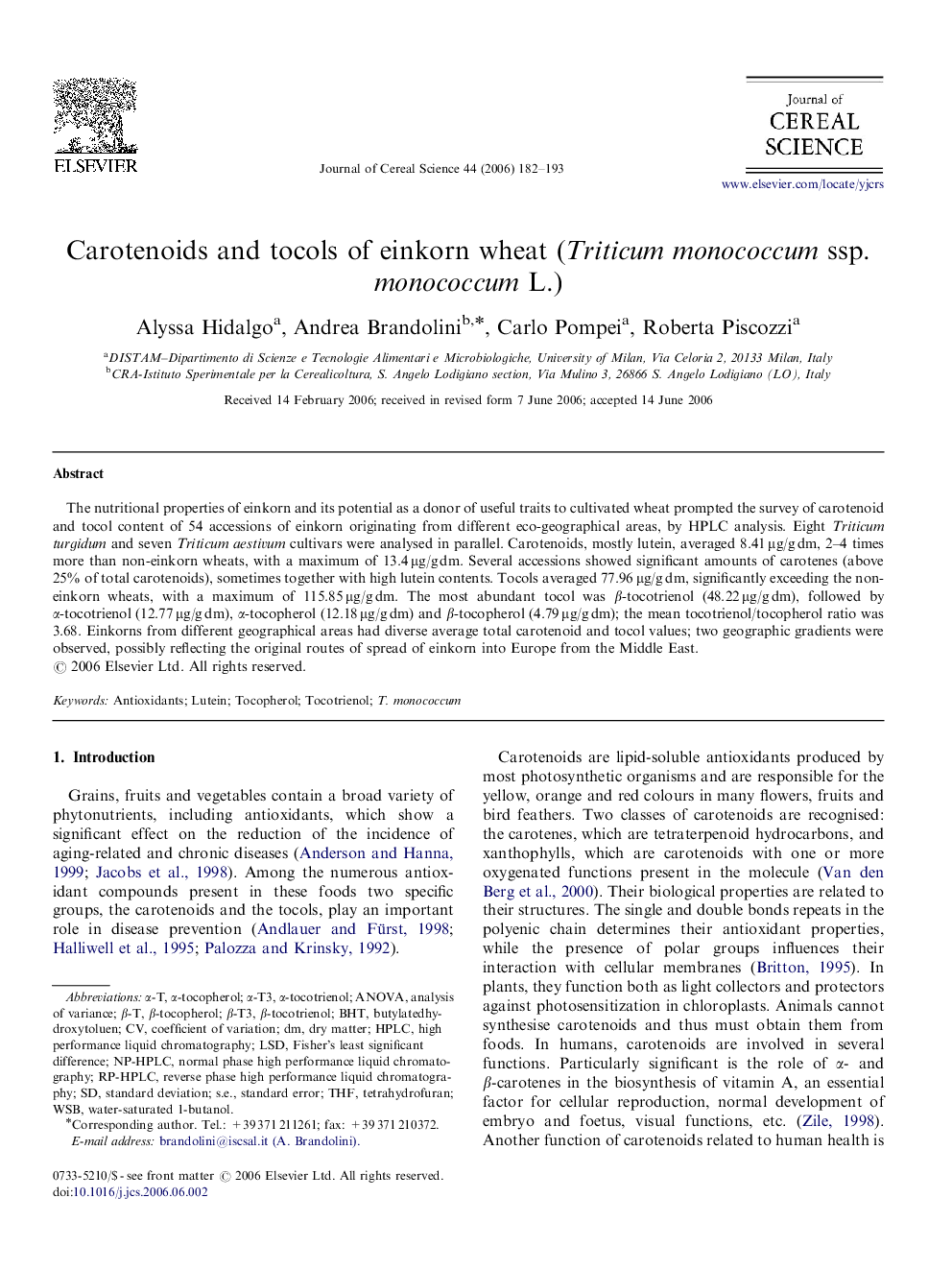| Article ID | Journal | Published Year | Pages | File Type |
|---|---|---|---|---|
| 4516718 | Journal of Cereal Science | 2006 | 12 Pages |
The nutritional properties of einkorn and its potential as a donor of useful traits to cultivated wheat prompted the survey of carotenoid and tocol content of 54 accessions of einkorn originating from different eco-geographical areas, by HPLC analysis. Eight Triticum turgidum and seven Triticum aestivum cultivars were analysed in parallel. Carotenoids, mostly lutein, averaged 8.41 μg/g dm, 2–4 times more than non-einkorn wheats, with a maximum of 13.4 μg/g dm. Several accessions showed significant amounts of carotenes (above 25% of total carotenoids), sometimes together with high lutein contents. Tocols averaged 77.96 μg/g dm, significantly exceeding the non-einkorn wheats, with a maximum of 115.85 μg/g dm. The most abundant tocol was ββ-tocotrienol (48.22 μg/g dm), followed by αα-tocotrienol (12.77 μg/g dm), αα-tocopherol (12.18 μg/g dm) and ββ-tocopherol (4.79 μg/g dm); the mean tocotrienol/tocopherol ratio was 3.68. Einkorns from different geographical areas had diverse average total carotenoid and tocol values; two geographic gradients were observed, possibly reflecting the original routes of spread of einkorn into Europe from the Middle East.
